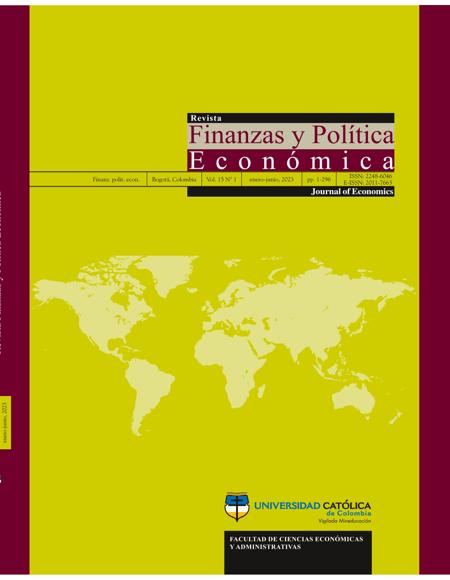
This work is licensed under a Creative Commons Attribution-NonCommercial-ShareAlike 4.0 International License.
This journal is licensed by a Creative Commons Attribution License (CC BY-NC-SA 4.0) Attribution-Non Commercial 4.0 International. For the CC licenses, the principle isthe creative freedom. This system complements the copyright without opposing it, conscious of its importance in our culture. The content of the articles is the responsibility of each author, and does not compromise in any way, to the journal or the university. It allows the transmission and reproduction of titles, abstracts and full content, with academic, scientific, cultural ends, provided acknowledgment of the respective source. This work cannot be used for commercial purposes.
They journal does not charge authors for submission or publication.
Abstract
Studies of cultural participation tend to concentrate their focus on the analysis of socioeconomic variables and/or availability of infrastructures, leaving in the background idiosyncratic variables such as the interest expressed or the predisposition to participate. Using data from the Survey of Cultural Habits and Practices of Spain 2018-2019 and through modelling using ordinary least squares (OLS), we seek to study the weights of classical socioeconomic variables as well as the different variables that make up cultural capital given its additive character in the development of interest. The main results obtained present cultural capital as the most determining component in the formation of interest, with reading in childhood having the greatest impact. It also highlights the possible existence of rational intergender transfer of interest, as parental participation is more important among the variables than that of the subject during childhood.

References
Aguado, L. & Palma, L. (2015). Factores que limitan la participación cultural. Una mirada desde la economía de la cultura. Revista de Ciencias Sociales. Universidad del Zulia, 21(1), 58-71. https://www.redalyc.org/articulo.oa?id=28037734006.
Álvarez-Sotomayor, A. y Martínez-Cousinou, G. (2016). ¿Capital económico o cultural? El efecto del origen social sobre las desventajas académicas de los hijos de inmigrantes en España. Papers, 101(4), 527-554. http://dx.doi.org/10.5565/rev/papers.2200.
Ateca-Amestoy, V (2009). El capital humano como determinante del consumo cultural. Estudios de Economía Aplicada, 27(1), 87-110. https://doi:10.25115/eea.v27i1.4851.
Bourdieu, P. (1987). Los tres estados del capital cultural. Sociológica, 2(5), 11-17. http://www.sociologicamexico.azc.uam.mx/index.php/Sociologica/article/view/1043/1015.
Bro, R., & Smilde, A. K. (2014). Principal component analysis. Analytical Methods, 6(9), 2812-2831. http:/doi:10.1039/c3ay41907j
Chen, G., & Tang, P. (2021). Similar but special: An econometric analysis of live performing arts attendance in mainland China. Journal of Cultural Economics, 45(3), 459-490. https://doi.org/10.1007/s10824-021-09422-7
Daenekindt, S., & Roose, H. (2013). Cultural chameleons: Social mobility and cultural practices in the private and the public sphere. Acta Sociológica, 56(4), 309-324. http://doi.org/10.1177/0001699313496589
De la Vega, P., Suárez-Fernández, S., Boto-García, D., & Prieto-Rodríguez, J. (2020). Playing a play: Online and live performing arts consumers profiles and the role of supply constraints. Journal of Cultural Economics, 44(3), 425-450. https://doi.org/10.1007/s10824-019-09367-y
De Sancha-Navarro, J. M., Lara, J., Oliver-Alfonso, M. D., & Palma Martos, L. (2021). Cultural Sustainability in University Students’ Flamenco Music Event Attendance: A Neural Networks Approach. Sustainability, 13(5), 2911. https://doi.org/10.3390/su13052911.
Díaz León, B., Martínez Fernández, I., & Palma Martos, L. (2021). Temporal restriction and interest for the elderly on cultural participation. The case of spanish performing arts 2019. Scientific Annals of Economics and Business, (68), 35-52. https://doi.org/10.47743/saeb-2021-0030.
Durrer, V., Kelly, G., McKnight, M., & Schubotz, D. (2020). Exploring young people’s understanding of culture: A study from Northern Ireland. Cultural Trends, 29(1), 4-18. https://doi: 10.1080/09548963.2019.1692184.
Estupiñán, J. M. T. (2008). Economía de la cultura en los museos de la Uptc: el caso del museo casa cultural Gustavo Rojas Pinilla 2004-2005. Apuntes del Cenas, 27(45), 269-291. https://revistas.uptc.edu.co/index.php/cenes/article/view/3094
Fernández Blanco, V., & Prieto Rodríguez, J. (2009). Análisis de los hábitos de lectura como una decisión económica. Estudios de Economía Aplicada, 27(1), 111-135. www.revista-eea.net/documentos/27111.pdf
Grisolía, J. M., Willis, K., Wymer, C., & Law, A. (2010). Social engagement and regional theatre: Patterns of theatre attendance. Cultural Trends, 19(3), 225-244. https://doi: 10.1080/09548963.2010.495277
Hashemi, N., Sebar, B., & Harris, N. (2018). The relationship between cultural capital and lifestyle health behaviours in young people: A systematic review. Public Health, (164), 57-67. https://doi.org/10.1016/j.puhe.2018.07.020
Klokker, R. H., & Jæger, M. M. (2022). Family background and cultural lifestyles: Multigenerational associations. Poetics, (92), 1-13. https://doi.org/10.1016/j.poetic.2022.101662
Nagel, I. (2010). Cultural participation between the ages of 14 and 24: Intergenerational transmission or cultural mobility? European Sociological Review, 26(5), 541-556. https://doi: 10.1093/esr/jcp037
Roose, H. (2008). Many-voiced or unisono? An inquiry into motives for attendance and aesthetic dispositions of the audience attending classical concerts. Acta Sociológica, 51(3), 237-253. https://doi.org/10.1177/0001699308094168
Smith, L. I. (2002). A tutorial on principal components analysis. http://www.iro.umontreal.ca/~pift6080/H09/documents/papers/pca_tutorial.pdf
Suárez-Fernández, S., Prieto-Rodríguez, J., & Pérez-Villadóniga, M. J. (2020). The changing role of education as we move from popular to highbrow culture. Journal of Cultural Economics, 44(2), 189-212. https://doi.org/10.1007/s10824-019-09355-2
Throsby, D. (2003) El capital cultural. En R. Towse (Ed.), Manual de economía de la cultura (pp. 131-135). Fundación Autor.
Voda, A. I., Martinez, I., Tiganas, C. G., Maha, L. G., & Filipeanu, D. (2019). Examining the effects of creativity and willingness to take risk on young students’ entrepreneurial intention. Transformations in Business & Economics, 18(2A) (47A), 469-489. http://www.transformations.knf.vu.lt/47a
Willekens, M., & Lievens, J. (2014). Family (and) culture: The effect of cultural capital within the family on the cultural participation of adolescents. Poetics, (42), 98-113. https://doi.org/10.1016/j.poetic.2013.11.003
Xie, X. (2019). Principal Component Analysis. https://www.ics.uci.edu/~xhx/courses/CS273P/12-pca-273p.pdf
Yaish, M., & Katz-Gerro, T. (2012). Disentangling ‘cultural capital’: The consequences of cultural and economic resources for taste and participation. European Sociological Review, 28(2), 169-185. https://doi.org/10.1093/esr/jcq056





























